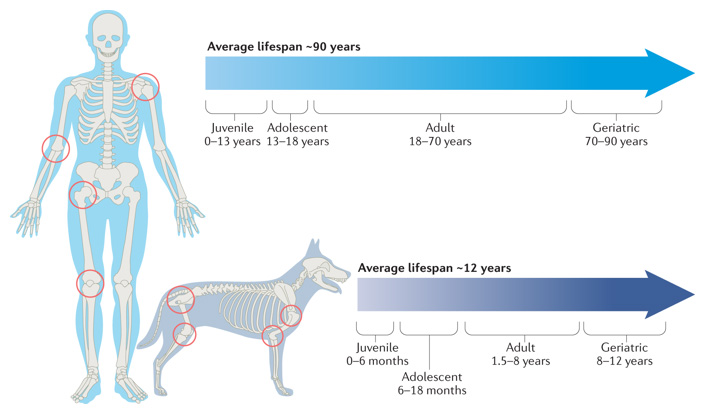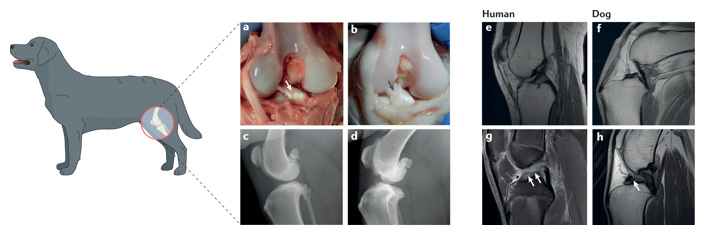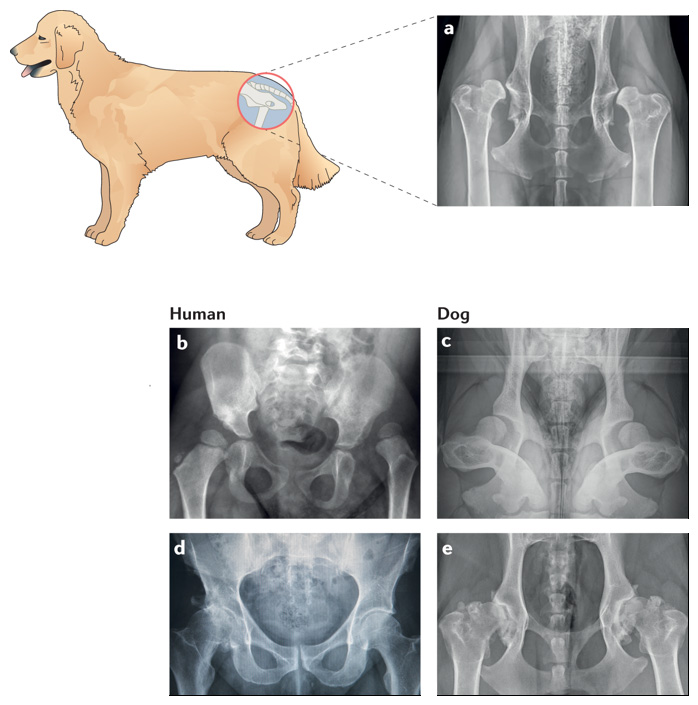RVC identifies links and similarities between Osteoarthritis in dogs and humans in Landmark Nature Review
An international team of researchers, led by the Royal Veterinary College, have for the first time identified key similarities between osteoarthritis (OA) in dogs and in humans.
Their findings, which are published in Nature Reviews Rheumatology, suggest the similarities are partly due to the shared lifestyles and environments of dogs and humans, however their similar anatomies and disease physiology also contribute.

For the first time, different forms of human and dog OA have been comprehensively aligned, with the One Medicine aim to pin-point shared mechanisms and new treatment options to help dogs and humans alike.
The researchers, who crossed various human and animal medicine disciplines, made their discoveries by conducting a comprehensive review of literature related to OA. From the scrutiny of over 230 peer reviewed academic studies, the team were able to amalgamate the research into one single source of knowledge, the ‘Spontaneous dog osteoarthritis — a One Medicine vision’ published in Nature Reviews. It was found that both dogs and humans share the most common areas for the development of OA; the knee, hip, shoulder and elbows. The pain experienced by both dogs and humans with OA also has a common basis, leading the researchers to believe the neurophysiology of dogs and humans is also linked.

By compiling this knowledge into one paper, the researchers hope this review will lead to future collaborative research of OA by human and animal health experts. This ‘one medicine’ approach could unlock new treatments to improve the welfare of both animals and humans.
The review was headed up by leading clinicians and researchers Dr Richard Meeson and Professor Andrew Pitsillides from the Royal Veterinary College, working in conjunction with bioengineers, human rheumatologists and veterinary research clinicians from the University College London, University of Portsmouth, the University of Edinburgh and Cornell University, USA.
Dr Richard Meeson, Lead author of the review and Head of Orthopaedics at the RVC, said: “Pet dogs live with us and develop many of the same diseases as humans, such as arthritis. There is a growing belief, therefore, that a ‘one medicine’ approach to many of these diseases has the potential to unlock new understanding and treatments for both animals and humans. The potential for this approach has been clearly demonstrated in our review.”

Notes to Editors
For more information please contact:
- Alex Cassells (alexander.cassells@plmr.co.uk) or Ploy Radford (ploy.radford@plmr.co.uk)
- Press Line: 0800 368 9520
About the RVC
- The Royal Veterinary College (RVC) is the UK's largest and longest established independent veterinary school and is a constituent College of the University of London.
- The RVC offers undergraduate, postgraduate and CPD programmes in veterinary medicine, veterinary nursing and biological sciences.
- It is currently the only veterinary school in the world to hold full accreditation from AVMA, EAEVE, RCVS and AVBC.
- In 2017, the RVC received a Gold award from the Teaching Excellence Framework (TEF) – the highest rating a university can receive.
- A research-led institution, the RVC maintained its position as the top veterinary institution in the Research Excellence Framework (2014), with 79% of its submission being rated as world-class or internationally excellent.
- The RVC also provides animal owners and the veterinary profession with access to expert veterinary care and advice through its teaching hospitals: the Beaumont Sainsbury Animal Hospital in central London, the Queen Mother Hospital for Animals (Europe's largest small animal referral centre), the Equine Referral Hospital and the Farm Animal Clinical Centre located at the Hertfordshire campus.
You may also be interested in:
-
RVC students take part in FAO Global Youth Dialogue on Sustainable Livestock Transformation
RVC students Femi Bankole, Lavinia Scudiero and Zip Walton recently partook in a Global Youth …

